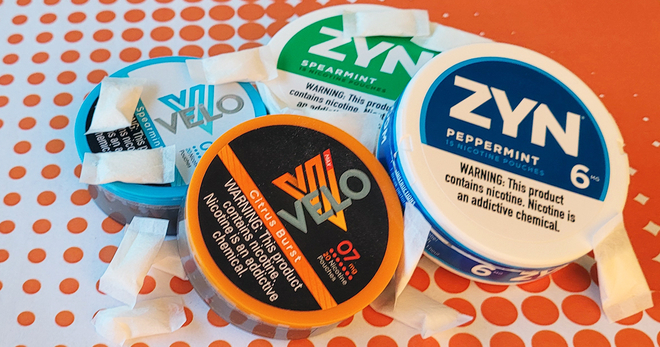Research and resources
Get the latest facts and analyses on the most important issues in commercial tobacco and substance use. You can also download resources to help end nicotine addiction in your community.
Learn about our research expertiseLIGHTS, CAMERA, ADDICTION
How persistent on-screen tobacco imagery continues to fuel nicotine addiction among young audiences
Latest
Topic
Emerging tobacco products
As the tobacco product marketplace evolves, new products are emerging that deliver nicotine in different ways. These products include e-cigarettes and oral nicotine pouches, and they typically come in many youth-appealing flavors.
Read moreTopic
Traditional tobacco products
Traditional tobacco products — cigars, little cigars and cigarillos, chewing tobacco, snuff, hookah and, of course, cigarettes, including menthol and organic varieties — continue to harm millions of people, as smoking remains the country’s leading cause of preventable death and disease.
Read MoreTopic
Targeted communities
Tobacco use disproportionately affects many populations — including people in low-income communities, racial and ethnic minorities, LGBT+ individuals, women, youth, members of the military and those with mental illness — who have a long and documented history of being targeted by the tobacco industry.
Read MoreTopic
Smoking by region
The massive decline in the overall U.S. smoking prevalence disguises a persistent problem. Many communities have not experienced an equally significant reduction in tobacco use, and smoking prevalence varies widely by geographic region. Many of these regions make up what we call “Tobacco Nation,” where smoking prevalence is nearly 50% higher compared to the rest of the country.
Read moreTopic
Quitting smoking / vaping
Information on how to quit smoking, vaping, or any tobacco product is in high demand. Most smokers say they want to quit, and e-cigarette use among youth and young adults remains alarmingly high, creating a major need for resources on how to quit vaping.
Read MoreTopic
Harmful effects of tobacco
Smoking remains the leading cause of preventable death and disease in the country. Even more, tobacco use isn't just a health issue for smokers — it affects the environment, the economy, and the health of nonsmokers through secondhand smoke.
Read MoreTopic
Tobacco prevention efforts
We know what works in tobacco prevention: evidence-based strategies, youth and young adult education campaigns, tobacco control policies that restrict exposure and youth access to tobacco, taxes, smoke-free environments, graphic warning labels, and funding for prevention and intervention programs, as well as the activism efforts that propel these measures forward.
Read MoreTopic
Tobacco industry marketing
The tobacco industry spent almost $9.5 billion marketing its cigarette, smokeless tobacco, and e-cigarette products in 2021, the most recent year with data for all three categories. Almost $9.1 billion (or 95.6%) of that was spent on marketing in the retail environment that year, amounting to over $1 million every hour.
Read MoreTopic
Tobacco in pop culture
Tobacco imagery in pop culture — including TV, video games, movies and social media — contributes to the normalization of smoking and continues to portray it positively, as a normal social behavior and as glamorous, rebellious and edgy.
Read MoreTopic
Substance use
Given the toll of the national opioid crisis and its adjacency to our existing work, we are lending our prevention and public health education expertise to the national opioid epidemic. Research ashows that exposure to the highly addictive chemical nicotine, found in tobacco products, can make adolescent brains more susceptible to other addictive substances.
Read MoreWant support quitting? Join EX Program
By clicking JOIN, you agree to the Terms, Text Message Terms and Privacy Policy.
Msg&Data rates may apply; msgs are automated.





























